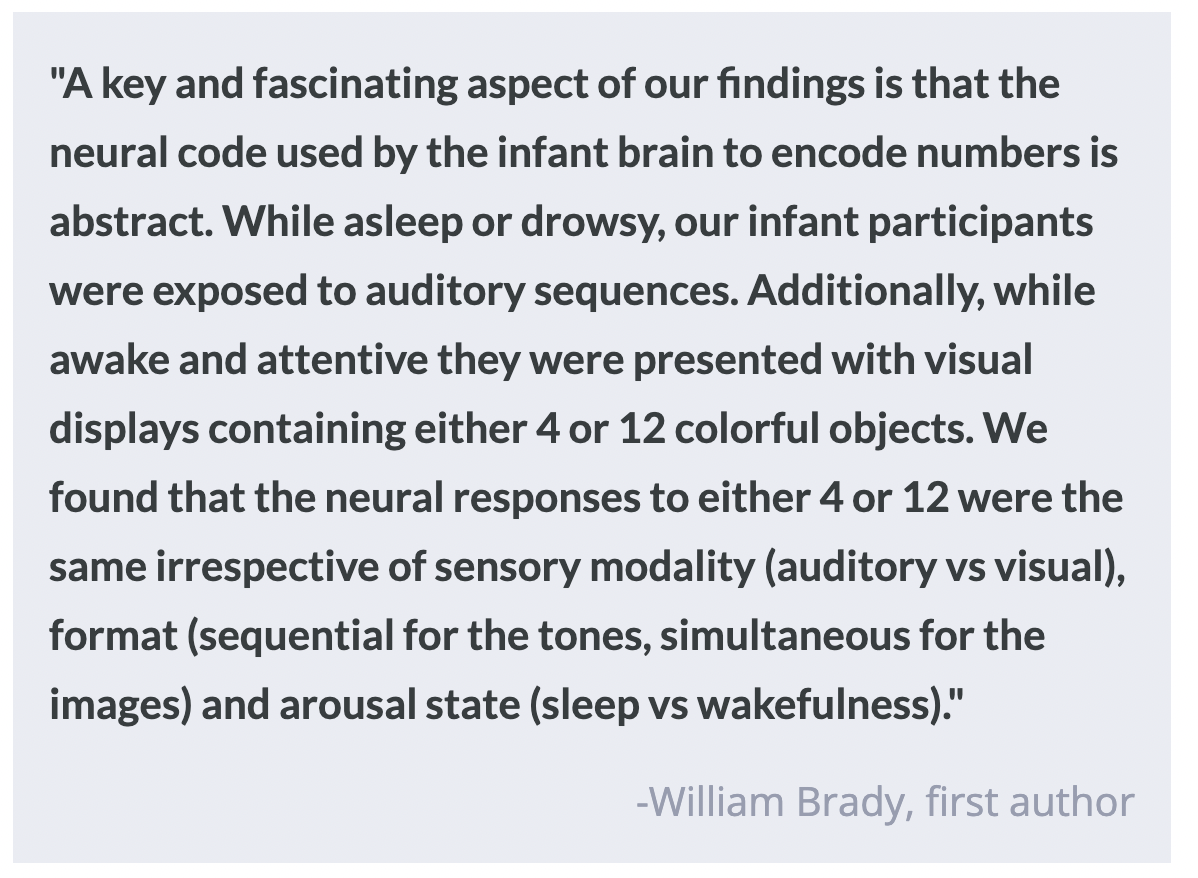Encoding Numerical Information is as Easy as 1-2-3 for Infants
Post by Lincoln Tracy
The takeaway
Infants as young as three months old have ‘number sense’, meaning they can automatically encode the number of tones they hear or the number of objects they see.
What's the science?
The ability to discriminate numbers – independently of physical quantities such as size or density – is an important human behavior that is also observed in mammals, birds, and fish. However, it is unclear whether humans are born with an innate ‘number sense’, or whether this is a learned response. This week in Current Biology, Gennari and colleagues tested the existence of a genuine ‘number sense’ by examining the neural activity of three-month olds, measured by electroencephalography (EEG), in response to different stimuli containing numerical and non-numerical information.
How did they do it?
The authors played a variety of auditory sequences that differed in length, rate, instrument, and pitch to 26 drowsy or sleeping three-month old infants while a high-density EEG system recorded their neural responses. The tones composing the sequences could be “short” (a 40ms tone with a 20ms gap between tones), “medium” (120ms with a 60ms gap), or “long” (360ms with a 180ms gap). For the analysis of the EEG recordings, the authors used multivariate pattern analysis to individuate any potential purely numerical neural code that was separate from the neural activity patterns reflecting other characteristics of the auditory stimuli such as tone rate and duration. A key contrast in their analysis concerned the auditory sequences composed of 4 “long” tones vs 12 “medium” tones or 4 "medium" tones vs 12 "short" tones. These pairs of sequences lasted the same length overall but obviously contained a different number of notes.
What did they find?
The authors found unique neural responses to different number conditions, demonstrating that three-month old infant brains can estimate the number of tones in an auditory sequence separately from other magnitudes. Further, infants were able to encode numbers even during sleep. This implies that number is a fundamental and critical dimension for representing the auditory environment around us.
What's the impact?
These findings confirm that our brain treats number as a basic dimension of the environment from a very young age. As other researchers believe that the ability to process approximate numbers is the starting point for a deeper understanding of mathematics, these findings may have practical implications in educational and rehabilitative interventions.


